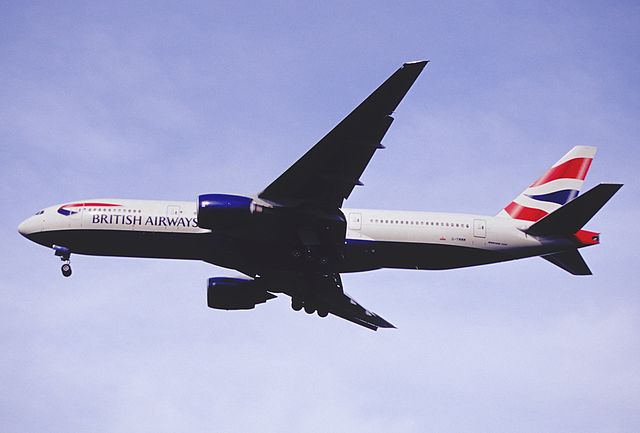In an internal combustion engine, fuel starvation is the failure of the fuel system to supply sufficient fuel to allow the engine to run properly, for example due to blockage, vapor lock, contamination by water, malfunction of the fuel pump or incorrect operation, leading to loss of power or engine stoppage. There is still fuel in the tank(s), but it is unable to get to the engine(s) in sufficient quantity. By contrast, fuel exhaustion is an occurrence in which the vehicle in question becomes completely devoid of usable fuel, with results similar to those of fuel starvation.
British Airways Flight 38 crash-landed at London Heathrow in 2008 after its fuel lines became clogged with ice crystals.
The forward fuselage section of Lady Be Good, a B-24 Liberator which crashed in the Libyan Desert after running out of fuel
British Airways Flight 38
British Airways Flight 38 was a scheduled international passenger flight from Beijing Capital International Airport in Beijing, China, to London Heathrow Airport in London, United Kingdom, an 8,100-kilometre trip. On 17 January 2008, the Boeing 777-200ER aircraft operating the flight crashed just short of the runway while landing at Heathrow. No fatalities occurred; of the 152 people on board, 47 sustained injuries, one serious. It was the first time in the aircraft type's history that a Boeing 777 was declared a hull loss, and subsequently written off.
G-YMMM after the crash at London Heathrow Airport.
G-YMMM, the aircraft involved in the accident in May 2002
Illustration of cavitation in the high pressure fuel pumps used in the Trent 800 engines on the Boeing 777. When fuel flowing into the pump falls to very low pressure, gas bubbles form in the fuel. Bubble collapse on the high pressure side can cause damage to the pump's outlet ports.
Mock-up of G-YMMM's fuel delivery system






